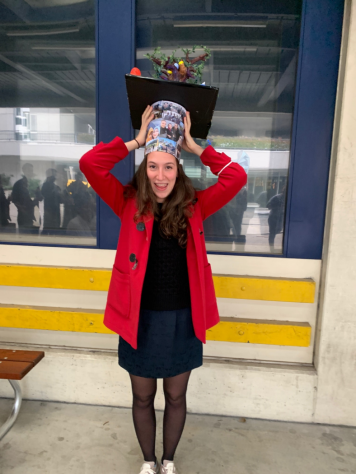Congratulations to Dr. Ariane Stucki for passing her PhD Defense!
"Compartmentalization through Droplet Microfluidics for Permeation Studies and High-Throughput Screenings"

Comittee Members
Prof. Petra S. Dittrich, ETH
Prof. Esther Amstad, EPFL
Prof. Siddharth Deshpande, WUR
Prof. Sai Reddy (Chair), ETH
Abstract
Compartmentalization is at the core of life, as cell membranes shield cells from the outside and enclose cellular components and organelles. These membranes, composed primarily of a lipid bilayer, possess unique permeability properties necessary to cell survival and function. Mimicking these compartments and their characteristics has been the objective of numerous research groups for diverse purposes. Particular scientific communities have focused on the bottom-up construction of artificial cells, with close resemblance to living cells, to further the understanding of the origin of life or to get insights into specific cell properties. Others have engineered various types of compartments as versatile microreactors. In particular, such compartments can be used for screenings for drug and protein discovery. In this domain, compartmentalization is fundamental, as it allows the conservation of the phenotype-genotype linkage, i.e. the product of a particular reaction can be linked back to a specific reagent.
One of the approaches to achieve the formation of compartments is droplet microfluidics, a powerful tool enabling the generation of thousands of uniform water-in-oil microcompartments per second. Such compartments can encapsulate and retain a wide range of chemical compounds, proteins or even live cells, making them ideal microreactors. A higher level of complexity can be achieved by adding a second emulsification step during droplet formation, leading to the generation of water-in-oil-in-water double emulsion (DE) droplets. These compartments hold several advantages over single emulsion droplets in terms of stability and shelf-life. Their greatest asset, however, resides in the versatility of their oil shell. For example, various organic solvents and surfactants can be used to form DE droplets, conferring different permeability properties to their shell. Exploiting these properties, droplet microfluidics has been optimized for the formation of all types of compartments, from lipid vesicles to semi-permeable hydrogel droplets to robust double emulsion microreactors. These vessels are of particular interest for high-throughput screenings as they allows the screening of large libraries (> 10’000 variants) with lower reagent consumption and shorter processing times compared to standard methods (i.e. screenings in microtiter plates).
In this thesis, the shell properties of different double emulsion-based compartments are harvested to engineer versatile, tunable capsules for applications in biochemistry and biotechnology. Here, monodisperse compartments formed by droplet microfluidics are combined with cutting edge technologies (e.g. fluorescence-activated cell sorting, next-generation sequencing) to propose new approaches towards ultrahigh-throughput screenings for directed evolution.
First, the retention and stability properties of DE droplets are applied to the in vivo activity screening of an artificial metalloenzyme. For this purpose, DE droplets are used to compartmentalize single E. coli cells expressing a protein variant that participates in a fluorogenic enzymatic reaction. The compatibility of DE droplets with fluorescence-activated cell sorters allows the sorting and downstream sequencing of the mutants with the highest activity. In a second step, we combine the properties of DE droplets and lipid vesicles in a two-level compartmentalization system, where large unilamellar vesicles (LUVs) are encapsulated in DE droplets. The structural stability of DE droplets and their permeability to a particular surfactant allow the triggered rupture of LUVs, releasing their cargo inside the DE droplets and starting a reaction. This method is a new tool for the synchronized delivery of reagents into closed compartments without any volume or concentration changes. Finally, we use microfluidic tools to form and study DE-templated giant unilamellar vesicles (GUVs). A customized microfluidic setup enables us to monitor calcium permeation across functionalized lipid membranes in a controlled environment for more than six hours. This study reveals that the permeation dynamics depend on the lipid composition, giving an insight into tailored calcium permeation.
These different studies illustrate the potential and versatility of double emulsion-based compartments for permeation studies and high-throughput screening applications.
